Actually Stalingrad eventually became the most analyzed war game in existence, (according to Board Game Geek) despite all of the bad press.
The components are standard fare for the era, a 22" x 28" two piece mounted map board with hex overlay. The art is basic with simple terrain features such as mountains, rivers, swamps and cities. It definitely does not jump out at you as beautiful. However it is sturdy and functional. My board hails from 1963 and is in great shape 52 years after it was made. The counters are small compared to modern games and can be a bit hard on the old eyes to read, let alone handle. I am constantly having to fiddle with stacks after counting attack and defense values due to clumsiness. A minor issue to be sure, more a testament of my not aging as well as the game. Each counter is printed with a NATO symbol representing either Armor, Infantry, Cavalry, or Mechanized Infantry. They also have three numerical values on each of them, these represent 1. Attack factor, 2. Defense factor, 3. Movement factor. So a Russian (red) infantry unit that has an 7-10-4 on it would have 7 attack, 10 defense and 4 movement.
There is also the famous Avalon Hill Combat Results Table (CRT) a time record chart, and a weather card. On the obverse of the weather table is printed what AH called an Order of Battle Reference. It is basically a listing of all the counters for both armies so a player can check if he/she thinks they may have lost one to the cat.
There are two sets of rules for Stalingrad, the original 1963 set and the revised 1974. Most players began to use the latter version once it became available as the changes it offered helped balance the game somewhat. Prior to these changes games tended to favor the Russian player. I am referencing the 1974 rules here.
To win the game the German player must either eliminate all Russian units (not an easy task) or capture and occupy the three Russian cities Leningrad, Moscow, and Stalingrad simultaneously for two consecutive turns before May, 1943.
The Russian must avoid the German victory conditions or eliminate all German forces on the board.
Set up- The Russian player sets up first by placing any and all of his/her units east of the Axis-Soviet border. (dark black line on the map). The Russians can place units adjacent to the border itself. Beginning players may find this a bit intimidating so I suggest using the basic "set up" of Russian forces which can be found in the Battle Manual. Though not the best defensive plan, it actually was nicknamed "thin crust defense", this set up will allow the game to get started.
Next, the German player places all of his/her units west of the border, except the Hungarian and Italian units which don't come into play until May of 1942. All Finnish units must be placed in Finland. The German player may also place an additional eight combat factors of units in Finland at this point if they want. Axis units cannot be placed adjacent to the border but must start at least one hex away.
Replacements can move and attack on the same turn they are received.
To move units a player simply counts off his/her allotted movement factor for the unit they wish to move. Terrain plays a very minor role in movement as there are only three terrain features that adjust it. Units must stop immediately upon entering either a mountain or swamp hex and they cannot move until the next turn. Movement through these hexes is at the rate of one per turn. Railroads offer a ten hex bonus to the movement factor of units. This bonus is decreased to five during the winter months or any turns that there is snow.
Defense modifiers for terrain are simple. Behind rivers, in mountains and major cities all defense factors are doubled.
Unlike some other titles though, Stalingrad does not have an Automatic Victory condition, i.e. battles fought at 7-1 odds or greater automatically eliminate the defender. This is very important for the Russian player to understand as they can use weaker units to defend various points to slow the advance of the German forces.
Another important and somewhat contentious combat rule is advance after combat. Attacking units can only occupy recently vacated hexes in combat if the defender's defense factor was doubled during the combat. In other words, if the defender is in a mountain, city, or behind river lines. Many wargamers find this rule very irritating in that it is unrealistic.
Me ? I'm OK with it as I look at Stalingrad as a game and not a simulation.
The Russian replacement rate is a little more generous as in September of 41' they begin receiving 4 Defense factors per month for each of the three objective cities they control (Leningrad, Moscow, and Stalingrad). This rate increases to 5 factors per city per month in December, and 6 in May of 42'. These units can be placed in any of the objective cities controlled, in any combination.
In Stalingrad every December, January, and February, are consider snow months, which means all movement is cut in half including the railroad bonus, and that certain northern lakes and rivers are "frozen" which negates the defensive bonus of rivers and allows movement on frozen lakes.
The months October, November, March and April are unknown weather months and must be rolled for to see what effects will be applied. At the beginning of each of these months the German player rolls a six sided die and applies the effect to that month's turn.
So how does this old girl play out? Well pretty good overall. What I like about this game is that on the very first turn hell even during set up a player has to be engaged and thoughtful. A good Russian defense along the border can be quite a puzzle to figure out for the Germans, ( I always like to play the aggressor) and I have found myself more than once analyzing the board ad nauseum before placing a single unit. But once I think I have found the weak spot I quickly get my units set up.
Turns go a bit slow at first as both sides are jockeying for position, the Russian shores up defense lines and moves units to hinder a breakthrough, whilst the German tries to get units across the many river lines as quickly as possible so to negate the defensive bonus they provide the enemy. Eventually a breakthrough occurs and the game takes on a more dynamic and violent pace. Armor races across the steppe to capture rail lines and cities. Russians sacrifice unit after unit playing for time, hoping to frustrate and annoy the Germans as much as possible. Once Russian replacements begin to arrive the tide begins to turn, slowly, but the Germans can still take the game.
What makes this game play so well are the simple rules that anyone can learn very quickly. You are not referencing the rule book constantly for an obscure subset of instructions every other turn which one experiences in more difficult titles. And new players can grasp all of the concepts with little to no difficulty.
Cheers
AL
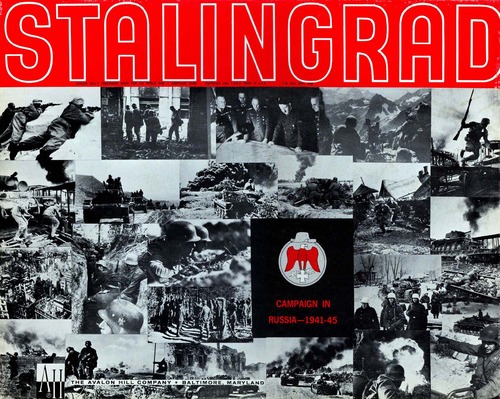
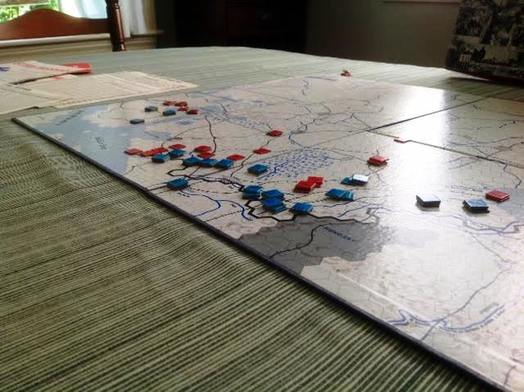
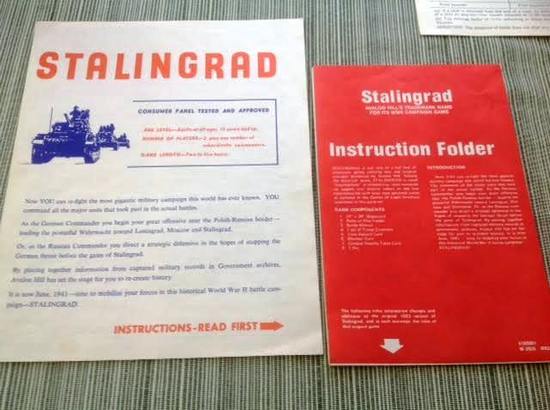
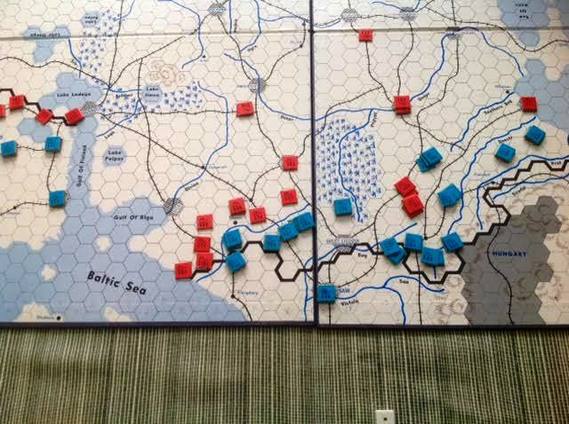
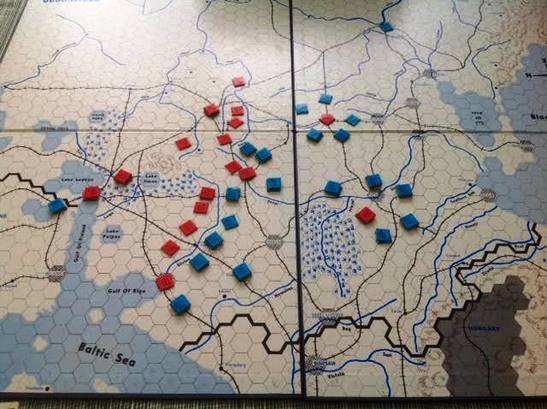
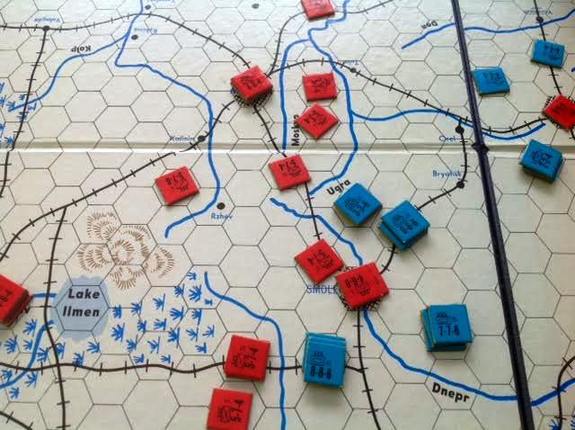
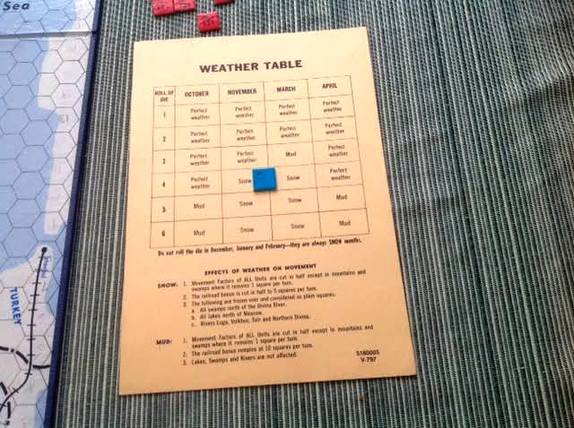
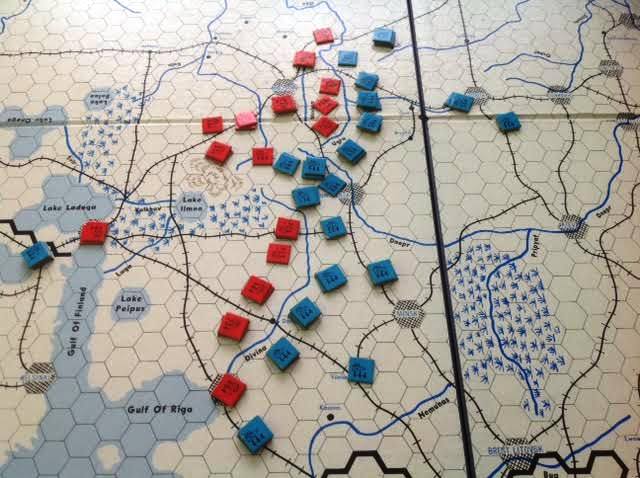
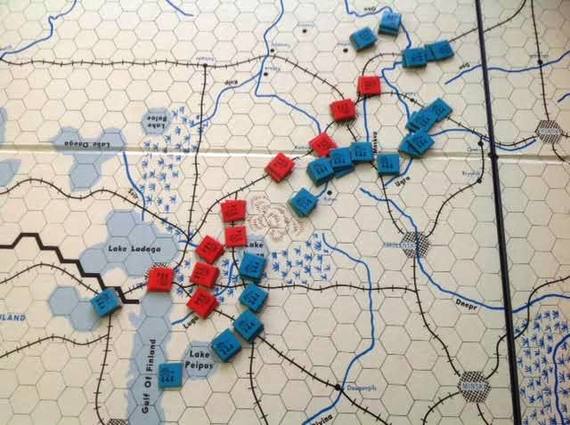
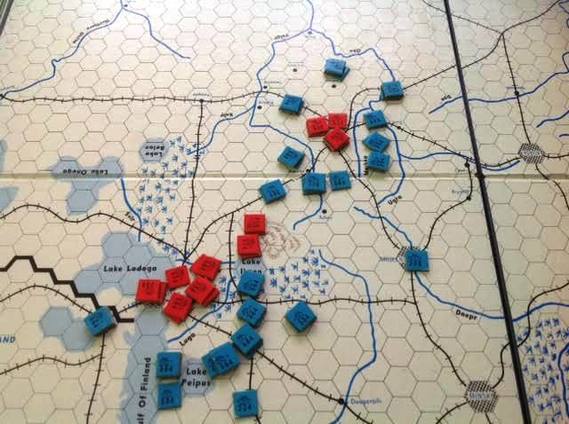
 RSS Feed
RSS Feed